Metaverse and the New Digital Economy
This article introduces artists and creative professionals to the terminologies, evolution, opportunities and risks associated with different elements in the new digital economy.
Author: Majella Clarke
This article introduces artists and creative professionals to the terminologies, evolution, opportunities and risks associated with different elements in the new digital economy.
Author: Majella Clarke


This article introduces artists and creative professionals to the terminologies, evolution, opportunities and risks associated with different elements in the new digital economy, including Blockchain, Metaverse and Web3. This article will focus on introducing how creative professionals can use, monetise, and protect creative work, referring to highly visible cases in which artists have used the new digital economy to generate revenue for their art.
Metaverse, Web3, Blockchain, Cryptowallet, Decentralised Finance. These are just some of the words that are becoming more common in our daily work as more people access the new digital economy. Though these new terminologies for protecting, monetising, and governing creative content are still emerging, they also have the potential to reshape the creative industries’ business models and provide new opportunities for professionals to be remunerated.
Non-Fungible Tokens (NFTs), smart contracts, and Web3 Wallets are just some of the growing numbers of alternative technologies that are emerging for artists and creators to remunerate and protect their work. However, for some professionals in the arts, the new digital economy may be viewed with suspicion mixed with curiosity. After all, it is hard to ignore headlines like “Mysterious Pak NFT Project Generates $91.8 Million in Sales on Nifty Gateway” or “Clock” NFT Sells for $52.7Million to Help Fund Julian Assange’s Legal Defense”. It can be equally baffling to attempt to understand the rationale that generates millions in sales of CryptoPunk NFTs and the dogwifhat meme that has a market capitalisation exceeding $1 Billion and generating its own cryptocurrency, the WIF. So, what is the Blockchain and the new digital economy? Why might artists be interested in it? What are the risks? And what do we need to know to use it?
Let’s start with the digital economy. Until the mass adoption of the Internet back in the 1990s, the economy was mostly physical – that is, you would go into a gallery to buy art. You might seek a publishing house and meet with an editor to produce a book, or you might walk into a bricks-and-mortar shop to purchase clothes. While physical, economic and productive activities still exist today, the mass adoption of broadband Internet and digitalisation since the early 2000s, accelerating during the COVID pandemic, created many new digital business models and ways of working, such as e-commerce, virtual entertainment and remote working. The digital economy now exists and continues to grow alongside the physical economy. However, there are rapidly evolving differences in the way we produce, add value, consume, govern, protect, learn, and entertain. Digital transformation plays an important role as it transforms many of the activities humans do in the physical economy into the digital space, opening access to pursuits like self-publishing and monetising creative outcomes (e.g. virtual galleries, streaming platforms, NFTs). These phenomena have emerging implications for artists and creative professionals as digital transformation requires the development of new skills and knowledge, such as understanding Blockchain technologies, to engage, protect, and capitalise in the digital space.

Blockchain is a technology and a system for sharing information. It works under the principles of decentralisation and transparency and is built on cryptography. The Blockchain tracks transactions, its “blocks” (or list of transactions) get added to a chain of blocks in a sequential order so that the transaction information cannot be changed. Because the public Blockchains (e.g. Bitcoin, Ethereum) are decentralised to the point where no participant has control over the network or system, the transaction information is sent and recorded to decentralised nodes in the system.
Digital art and new media art are suitable for online transactions. Limited edition and material works that have a unique value that the artist wants to protect could also be suitable for the Blockchain. After all, there are multiple ways in which physical art can be connected to the Blockchain, including 3D modelling, scanning, or a high-resolution digital image. QR codes and RFID tags are also other common ways for artists to link physical artistic expressions to the Blockchain.
Artists might consider using the Blockchain if they are interested in using the digital space, such as OpenSea or Alusta, for creating, authenticating, and/or monetising their work. The Blockchain can also be of benefit to artists who are committed to building online communities, as the online environment can offer alternative ways to engage and interact with the audience. Artists keen to explore new revenue models for their work, such as royalties from secondary sales, might also consider looking into smart contracts.


However, the Blockchain is not for everyone. Artists who have their practice in a physical space and those who prefer traditional transactions for their physical art would be unlikely to benefit from using the Blockchain to monetise their work. In addition, artists who do not have a strong online presence and maintain engagement across multiple digital platforms would be advised against using the Blockchain as it is unlikely to be a technology that will align with their practice. Finally, the Blockchain being online means that it is dependent on access to digital infrastructure and a high-performing Internet. Therefore, the Blockchain could exclude audiences in places that have unreliable electricity and Internet access.
The Blockchain has many examples of artists from different disciplines and practices that are using the Blockchain to promote and monetise their work. Here are some well-known examples:
Music: Gramatik was one of the first artists to “tokenise” themselves using the Etherum Blockchain. When his GRMTK token was launched in November 2017, it raised $2.25 million in Ether digital currency in just 24 hours.
Digital Artist: Pak is a pseudonym for a mysterious creator of NFTs reaching some of the highest prices paid to date for their NFT Merge.
Performance Art: Marina Abramović issued her first NFT in 2022. Produced in collaboration with The Cultural Institute of Radical Contemporary Art (CIRCA), the new piece reprises her legendary performance, The Hero (2001).
Fashion: The Fabrica are building the wardrobe of the Metaverse, where all NFT holders can create, trade and wear digital fashion collections.
Finally, the online gaming industry continues to be one of the most mature and developed users of the Blockchain.
Blockchain platforms that are popular in the digital art space include Ethereum, Flow and Tezos. These Blockchain platforms support the minting of Non-Fungible Tokens (NFTs), which is the mechanism used to “tokenise” (monetise) the creative work. Connecting to one of the Blockchain platforms requires you to set up a digital wallet. Digital wallets are also known as Web3 wallets or cryptowallets.
Key Steps for Monetising Your Art

Setting up a digital wallet is essential for storing cryptocurrencies and NFTs. The digital wallet stores payment information and can hold many different forms of e-transaction information, including debit and credit cards, tickets, loyalty cards, cryptocurrencies, play-to-earn tokens, NFTs and more.
The most common digital wallets for the monetisation of art are Metamask and Coinbase. Both digital wallets have tutorials and support pages on how to use their respective technologies. Due to the decentralised nature of the Blockchain, it is important to note that different digital wallets have different terms, features and functions. Consequently, users should consider how they want to monetise their creative work through minting their own NFTs. Or gaining royalties on the secondary sale of their work through smart contracts of interest?

There is one more point to tackle before concluding this piece. Risk is real in all financial spaces, and cryptocurrencies and NFTs are no exception to scams and fraud. However, the risks are different in Web3 and on the Blockchain compared with traditional centralised financial instruments, such as publicly listed stocks and bonds. The Blockchain, in its decentralised governance model and early maturity, is not as regulated as the global financial markets and systems. Governments are still in the process of defining policies and practices for the Blockchain and cryptocurrencies to ensure their function – this creates uncertainty and can drive speculative “crypto-cowboy” behaviour. Therefore, it is recommended to choose established and reputable platforms and digital wallets, with a track record for ensuring secure transactions, for monetising your work. Good Blockchain due diligence, such as looking at user reviews, ensuring the technology has customer support with a contact point, and security features, is also recommended.
By choosing the most appropriate Blockchain platform, digital wallet and Web3 space, creative professionals can generate new revenue streams that protect and monetise their work that are not available in the physical space, while growing their online presence and communities.
